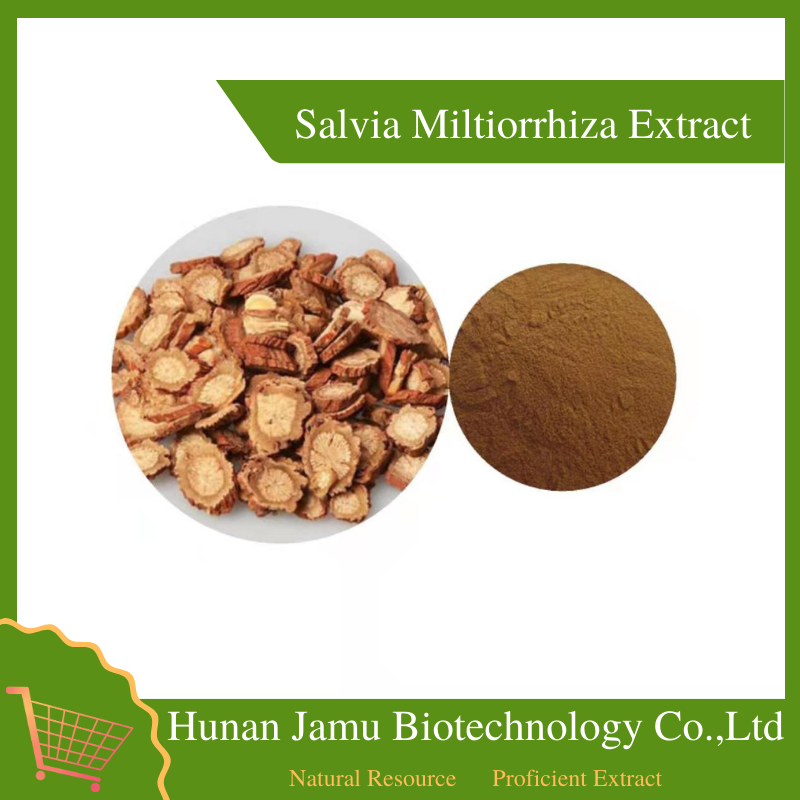 You are here:
Home
> Product Center
> Cosmetics Ingredient
> View Details
You are here:
Home
> Product Center
> Cosmetics Ingredient
> View Details


 You are here:
Home
> Product Center
> Cosmetics Ingredient
> View Details
You are here:
Home
> Product Center
> Cosmetics Ingredient
> View Details

【Product Name】: Salvia miltiorrhiza Extract
【Botanical Name】:Salvia miltiorrhiza Bunge
【Part used】:Root
【Appearance】: Brownish Yellow or Brownish Red powder
【Specification】: 4:1 10:1 /Regular Powder/ Tanshinone IIA 1-5% / Salvianolic Acid B 5-20%
【Storage Period】: 24 Months
【Package】: 1kg/bag 25kg/drum
【Test Method】: HPLC
【Storage Conditions】: Store in cool and dry places. Keep away from strong light and heat.
Description
Perennial herb, densely pilose throughout. The root is cylindrical, brick red. The stem is erect, much branched. Odd-pinnate compound leaves, lobules 3-7, apical lobules are larger, ovate or elliptic-ovate, apex is obtuse, base is broadly wedge or obliquely round, with circular serrated edges and pilose on both sides. Cymbidium has 6 or more flowers, composed of terminal or axillary racemes, densely glandular hairs and pilose; bracteoles lanceolate, glandular hairs; calyx campanulate, apex two-lipped, calyx The tube throat is densely covered with white pilose; the corolla is blue-purple, two-lipped, the upper lip is erect, slightly sickle-shaped, the tip is slightly cleft, the lower lip is shorter than the upper lip, and the apex is 3-lobed. Shallow 2-lobed; 2 stamens are developed, extending the corolla tube under the upper lip, filaments are shorter than the septum, the chambers of the 2 lower arms are sterile, and the apex is united; the style is longer than the stamens, and the stigma is 2-lobed. The nutlets are oblong, dark brown or black when ripe, enveloping the persistent calyx. Flowering from May to August, fruiting from August to September.
Chemical Composition
Mainly containing tanshinone I, tanshinone II А, tanshinone II B, cryptotanshinone, shikonic acid B, danshen cryptospironolactone, dihydrotanshinone, tanshin acid B, dihydroisotanshinone I, tanshinol, tanshinone, titansaponin, β- Sitosterol, stigmasterol, cetaxol, etc.